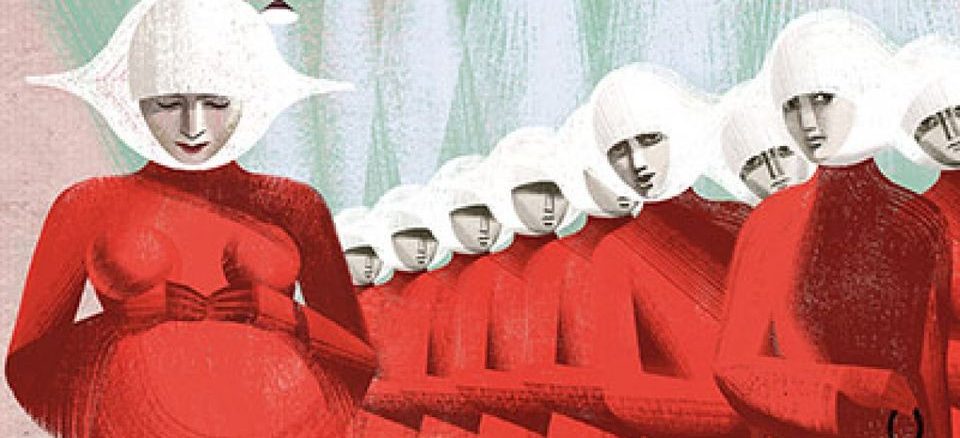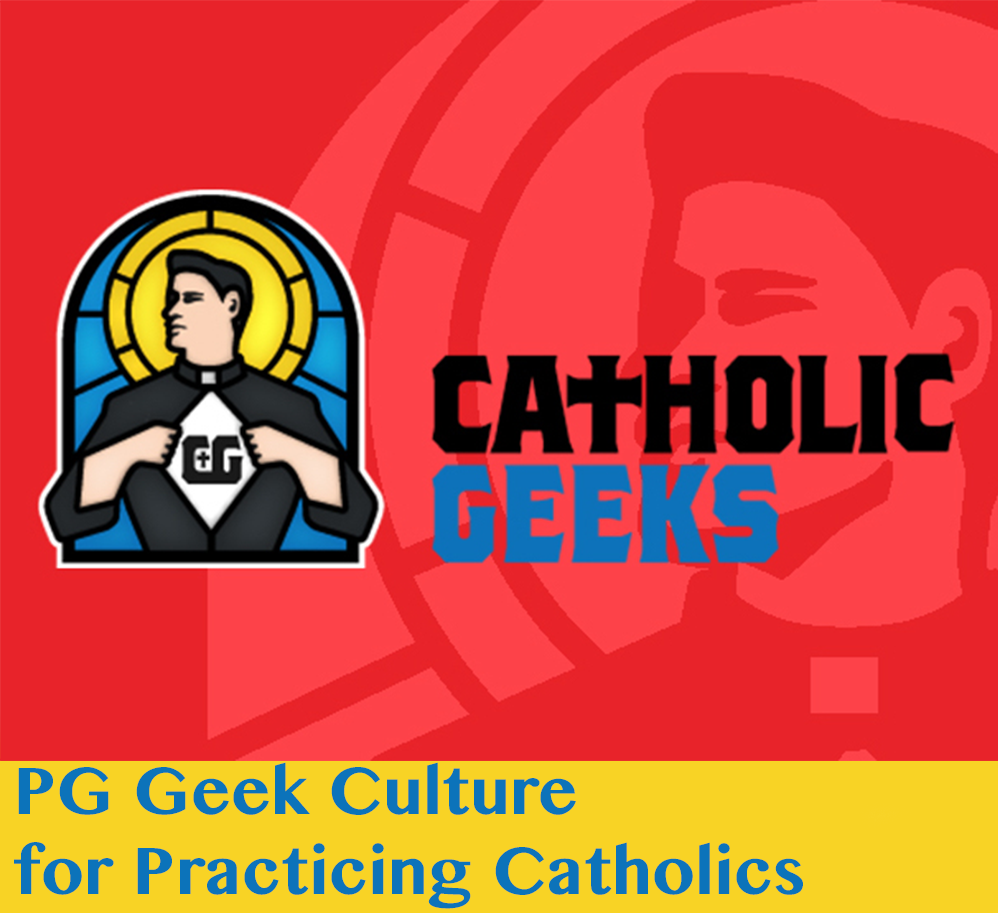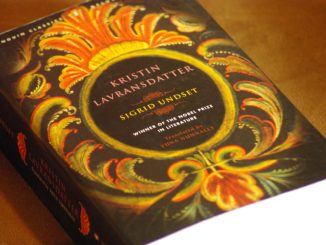
Before reading The Handmaid’s Tale, a friend of mine told me it was, “God’s Not Dead for secular people.” As apt as this might seem for some, it truly is a gross insult – at least the way this friend meant it. God’s Not Dead is the sort of story that is more concerned with the depiction of Christian themes than with telling a good story. This is one of the mortal sins of literature. Flannery O’Connor defends this point better than I could:
“The Catholic novelist frequently becomes so entranced with his Christian state that he forgets his nature as a fiction writer. This is all right, this is fine, if he stops writing fiction, but most of the time he doesn’t stop writing it, and he makes the same kind of spectacle of himself that the wolf would have made if, after his meeting with St. Francis, he had started walking on his hind legs.”
Her point being, after St. Francis converted the wolf, it continued being a wolf and not a human.
Likewise, after the fiction writer converts, he must stay true to his nature as a fiction writer. This is not to say that Catholic themes should stay out of literature. Miss O’Connor adds to this that Catholicism should make the writer a better writer, because Catholicism tells him how the truth about the world he’s depicting, so he can better depict it. In other words, theology is true and ought to remain true in a fictional world, but theology and literature are different.
The writer cannot prioritize the Christian state, or any state, over his nature as a fiction writer. God’s Not Dead, according to my friend, was an example of when a writer does this. But, was this also true for The Handmaid’s Tale?
The only other time someone had brought up The Handmaid’s Tale was during a discussion with a woman who was trying to convince me that Catholic prohibition of contraception was evil. After preaching to each other for a while, she finally told me to, “Just read The Handmaid’s Tale. Please. Just read it.” So, it seemed like it could be the sort of book that prioritizes some state over the nature of the fiction writer.
After it sat on my reading for almost a year, I finally read it.
At the beginning, the story seemed unfulfilling. The book opened by describing the abject life lived by women in a society dominated by an Old Testament Fundamentalist group called Sons of Jacob. In this society, women are only valued for birthing and raising children. If a woman cannot fulfill this duty, she is shipped to colonies where she works as a slave until death. The story is told through the perspective of a woman named Offred, (a slave name that marks her as the property of Commander Fred Waterford aka The Commander). Offred is a Handmade – or a woman who will live as a concubine to provide a child for The Commander and his wife, Serena Joy.
Offred’s story is mostly told by relating flashbacks to present events. Some of these flashbacks are violent depictions of how Sons of Jacob took power, made it illegal for women to work, froze bank accounts belonging to women, and created a society where women were powerless without men.
However, the beautiful nostalgic flashbacks add a huge layer of dimension. Offred continues think remind the reader of her love for her husband, Luke, and of her infant daughter, Rachel. Luke is particularly interesting, because he’s introduced as a man who pokes fun at Offred’s feminist mother by making offensive sexist comments around her.
Her love of Luke made The Handmaid’s Tale feel less like feminist propaganda, and more like a touching story about a real person. Offred spends much of the novel comparing Luke to The Commander, and later comparing both of them to her lover Nick. Because all the major male characters were compared as objects of love, it made each one seem slightly less human. Maybe this is just how women see men – but I doubt it. Maybe this is how women feel when they watch the 99.9% of action movies where all women are just an object of romance or lust. It usually takes away from literature when every female character is a possible or active relationship. The same is true when every male character is. Offred’s constant comparison of the three men in her life groups them as one force, the men, and re-centralizes the theme of feminism.
The most impressive thing about the men is how not-completely-evil the protagonist keeps saying they are. Despite The Commander’s ownership of Offred, she continues to suggest that he might have a soft side, or might even love her. Nick, The Commander’s chauffer and Offred’s lover, is incredibly human despite being a bit rough around the edges. Luke is also not just the husband that she loves and misses, but also the guy who cheated on his former wife with Offred, and sometimes spoke down to her. The only character who Offred might consider totally evil is Serena Joy, a woman who wants to use Offred as a surrogate and sees no purpose for her beyond that. Despite this, Serena isn’t in entire allegiance with the Sons of Jacob. She arranges for Offred to have an affair with Nick to guarantee Offred can get pregnant. In doing this, Serena denied her religion and broke the law, for a painfully human reason – she desired to raise a child.
Even the religious community isn’t always depicted in negative light. Quakers, and other Christians, form a large part of the membership in The Resistance against the Sons of Jacob.
The only force of good in the novel is Moira – Offred’s lesbian best friend who was a gay-rights activist before the Sons of Jacob took over, who assaulted an Aunt to escape her life as a Handmade, and who finally give up when they allowed her to live as a lesbian during the day as long as she could be a prostitute by night. Moira was highly praised by Offred throughout the entire novel. She seemed to be considered the model human being everyone should strive to be. But again, Moira is only able to escape because religious people help her. She might be the clear hero of the novel, but her heroism is dependent on the aid of those who the novel doesn’t really touch on a lot – the religious people who aren’t extremists.
All of these elements make the characters and the world complex. Despite its political backdrop, the book offers a view of the human experience which is fairly three dimensional. I say, “fairly,” because there is one painful flaw in the novel I can’t defend: Offred’s daughter, Rachel, who Offred regularly claims she misses immensely, but never speaks of her as having a personality. At first, I thought this was fine. The Sons of Jacob took control when Rachel was four, meaning she was a toddler or a small child the last time that Offred saw her. So, it’s okay to depict Rachel as a flat character, considering her youth. I changed my mind about this after speaking to my sister on the phone and saying hi to my four-year-old nephew and two-year-old niece. Those kids really have personality. A mother would definitely notice that. After considering this, Rachel almost seemed like a pawn for the author to use in order to convince her readers that new regime must be awful. They ripped a daughter away from her mother. That must hurt to read! Or, at least it would, if the daughter was believable.
So, is The Handmaid’s Tale just a secular feel-good novel?
Not exactly. The catharsis produced by the Handmaid’s Tale can certainly be taken that way, but it is primarily a story about a certain person in a certain situation, not a story about a political idea. Margaret Atwood never compromises depicting the human experience so that she can make a political point – besides, maybe, with Rachel, but I’m still unsure. Every character has their motivations and idiosyncrasies; no character is totally defined by their allegiances or faith.
However, Flannery O’Connor probably wouldn’t let this novel pass without speaking about where it went wrong from the Catholic view – which is the view she believes is the correct view.
One of the things Miss O’Connor proposes in Mystery and Manners is that the line between tragedy and comedy is drawn by the morality of the author. Therefore, secular authors can’t write comedy. Without a definite morality they are constantly having to justify the actions of their characters.
Considering the morality of the author, Flannery O’Connor would probably say Margaret Atwood had a proper depiction of human action, but drew the line between tragedy and comedy in the wrong place. Throughout The Handmaid’s Tale, the fact that people weren’t free to have sex for love was considered an evil. Sex had to be for a child, according to the religious fanatics. (The Thomistic idea that sex has two final causes, the immediate one of generation and procreation of a child, and the mediate one of uniting a man and a woman, was not considered.) Sex for love vs sex for procreation seems like it could have been the central conflict of the novel, and Sons of Jacob were evil for wanting to deny it.
Maybe this is bad storytelling, maybe it’s bad philosophy, maybe it’s both. From the Catholic perspective, it’s definitely wrong. If literature is judge by how well it depicts human action, it’s detrimental shortcomings are Rachel and where it draws the line between comedy and tragedy. As I read the novel, I never felt that the story was trying to convince of feminism. In fact, I felt that the story was trying to entertain me, but its idea of entertainment was frequent reminders that Margaret Atwood was a feminist.





